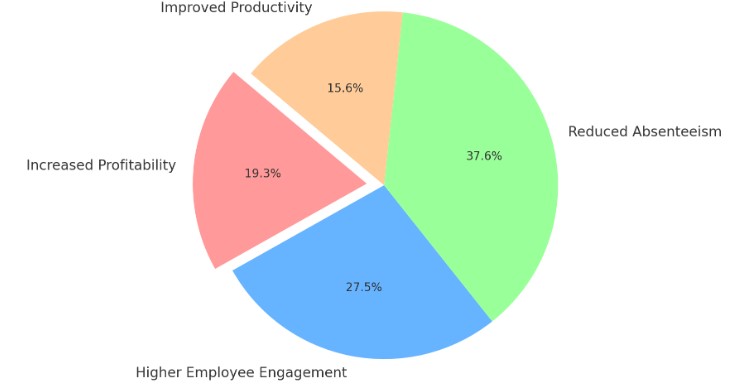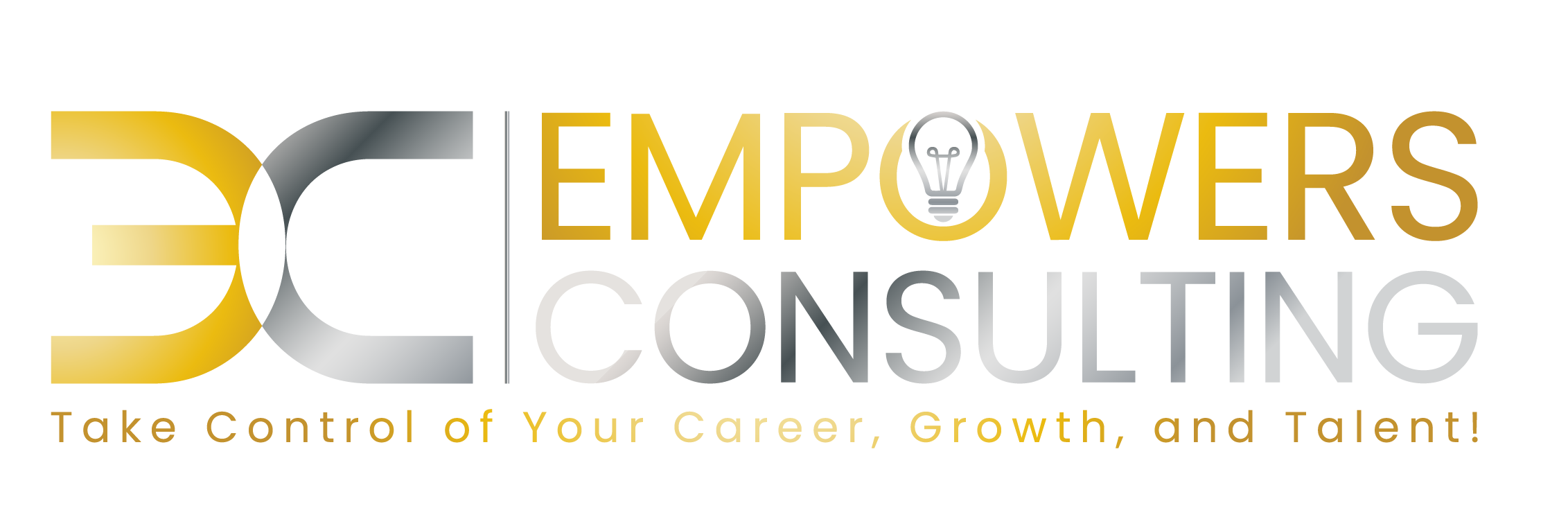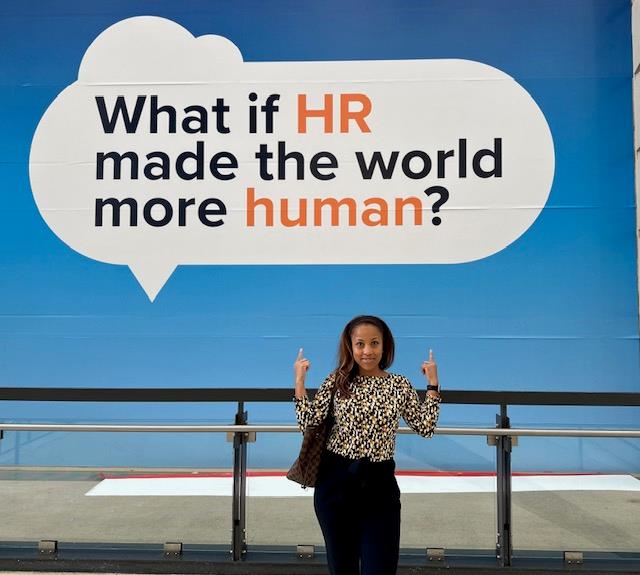In a world increasingly dominated by technology, automation, and data-driven decision-making, the role of Human Resources (HR) has never been more critical. HR departments are not just administrative functions; they are the architects of workplace culture and the stewards of employee well-being. The question arises: What if HR made the world more human? What if HR practices were designed to prioritize human-centric values, empathy, and meaningful connections? This article explores the potential of human-centric HR practices, outlines strategies for creating a more human workplace, and highlights key ROI data that supports this approach. Additionally, we’ll discuss how Empowers Consulting can help organizations transform their HR practices to create a more human company culture.

The Case for Human-Centric HR Practices
Human-centric HR practices focus on creating an environment where employees feel valued, respected, and empowered. These practices prioritize the holistic well-being of employees, considering their physical, emotional, and psychological needs. Unlike traditional HR models that may prioritize efficiency and cost-cutting, human-centric approaches emphasize empathy, inclusivity, and personal growth. In an era where employee expectations are evolving, organizations must adopt HR strategies for a more human workplace to attract and retain top talent.
Key ROI Data: The Benefits of Human-Centric HR
Investing in human-centric HR practices yields substantial returns. According to a study by Gallup, organizations with highly engaged employees experience a 21% increase in profitability and a 17% increase in productivity. Furthermore, companies that prioritize employee well-being see a 41% reduction in absenteeism. A report by Deloitte highlights that organizations with strong cultures of inclusivity and empathy outperform their competitors by 33% in terms of revenue growth. These data points demonstrate that making HR more human-centric is not just a moral imperative but a strategic business decision.
Strategies for Creating a More Human Workplace
To transform HR to humanize the workplace, organizations must adopt a multi-faceted approach that addresses various aspects of employee experience. Here are some key strategies:
- Empathy-Driven Leadership: Leaders should be trained to understand and empathize with the experiences and challenges faced by their employees. This involves active listening, emotional intelligence, and genuine concern for employee well-being.
- Inclusive Policies: Creating policies that promote diversity, equity, and inclusion is essential. This includes fair hiring practices, equal pay, and opportunities for professional growth for all employees.
- Employee Well-being Programs: Offering programs that support mental health, work-life balance, and physical well-being can significantly enhance employee satisfaction and productivity.
- Open Communication: Encourage open and transparent communication channels where employees feel safe to voice their concerns, share ideas, and provide feedback.
- Recognition and Reward: Acknowledge and reward employees for their contributions, not just in terms of performance but also for behaviors that align with the company’s values and culture.
Case Studies
Case Study 1: Zappos
Zappos, renowned for its customer service, extends its human-centric philosophy to its employees. The company focuses on creating a culture of happiness and inclusion. This approach has resulted in high employee retention rates and strong brand loyalty. Zappos’ commitment to a human-centric workplace is evident in its flat organizational structure and emphasis on employee empowerment.
Case Study 2: Microsoft
Microsoft has made significant strides in fostering a more human-centric culture under CEO Satya Nadella. The company has shifted from a “know-it-all” culture to a “learn-it-all” culture, emphasizing continuous learning and empathy. This transformation has been accompanied by a renewed focus on employee well-being, inclusivity, and psychological safety. As a result, Microsoft has seen improved employee engagement and innovation.
Case Study 3: Patagonia
Patagonia’s commitment to a human-centric workplace is reflected in its strong environmental and social values. The company prioritizes employee well-being by offering flexible work arrangements, on-site childcare, and robust parental leave policies. Patagonia’s focus on aligning its corporate values with employee needs has resulted in a highly engaged and loyal workforce.
Publications Supporting Making HR More Human-Centric
- Human Resource Management: Gaining a Competitive Advantage
Author: Noe, Hollenbeck, Gerhart, and Wright
Publisher: McGraw-Hill Education
Summary: This textbook explores the role of HR in creating a more inclusive and empathetic workplace. It highlights strategies for making HR practices more human-centric, focusing on employee well-being and engagement.
- The Human Workplace: People-Centered Organizational Development
Author: Bill Preuss
Publisher: Routledge
Summary: Preuss discusses how organizations can foster a human-centered workplace by aligning HR practices with the values of empathy, respect, and inclusivity. The book provides insights into the long-term benefits of prioritizing human-centric HR strategies.
- The Future of Work: Attract New Talent, Build Better Leaders, and Create a Competitive Organization Author: Jacob Morgan
Publisher: Wiley
Summary: Morgan explores the evolving landscape of work, and the critical role HR plays in shaping the future of organizations. The book emphasizes the importance of human-centric HR practices in creating a more humane and productive work environment, offering case studies and practical examples.
How Empowers Consulting Can Help
At Empowers Consulting, we specialize in helping organizations create more human-centric HR practices that prioritize employee well-being and organizational success. Our services include:
- Leadership Development Programs: We offer customized training for leaders to enhance their emotional intelligence, empathy, and inclusive leadership skills.
- HR Strategy Consulting: We work with HR departments to develop and implement policies that promote diversity, equity, and inclusion.
- Employee Well-being Programs: Our team designs comprehensive well-being initiatives that address mental health, work-life balance, and physical health.
- Organizational Culture Assessment: We assess your company’s culture and provide actionable insights to foster a more human-centric environment.
- Communication Training: We offer workshops and coaching on effective communication strategies to ensure open and transparent dialogue within the organization.
For more information on how Empowers Consulting can assist your organization in creating a more human-centric workplace, visit our website at empowersconsulting.com.
Conclusion
As we navigate an increasingly digital and automated world, the need for human-centric HR practices becomes more apparent. What if HR made the world more human? By focusing on the potential and well-being of employees, organizations can create more inclusive, empathetic, and productive workplaces. The ROI of such an approach is clear, with benefits ranging from improved employee engagement to enhanced organizational performance. Empowers Consulting is here to help your organization make this transition, ensuring that your HR practices not only meet today’s needs but are also prepared for the future.
References
- Gallup, Inc. (2020). State of the Global Workplace.
This report highlights the impact of employee engagement on organizational performance, including metrics such as profitability and productivity. Available at: Gallup - Deloitte (2021). Global Human Capital Trends.
This annual report discusses the importance of human-centric leadership and inclusive workplace cultures, emphasizing their impact on business outcomes. Available at: Deloitte - Kouzes, J. M., & Posner, B. Z. (2017). The Leadership Challenge: How to Make Extraordinary Things Happen in Organizations.
This book explores leadership development, including the shift towards a more empathetic and inclusive leadership style. It provides a foundation for understanding the importance of a growth mindset and emotional intelligence in leaders. Available at: Amazon - Hawkins, P. (2017). Leadership Team Coaching in Practice: Case Studies on Developing High-Performing Teams.
This book provides case studies and insights into how coaching can foster potential and prepare leaders for future challenges, aligning with the idea of future-focused coaching. Available at: Amazon - Microsoft Case Study (2020). Building a Learning Culture at Microsoft: A Case Study.
This case study explores Microsoft’s cultural transformation under CEO Satya Nadella, highlighting the shift towards a growth mindset and inclusive leadership. Available at: Harvard Business Review - Patagonia Case Study (2018). The Responsible Company: Patagonia’s Journey to Human-Centric Business Practices.
This study examines how Patagonia integrates environmental and social values with human-centric business practices, emphasizing employee well-being and inclusivity. Available at: Harvard Business Review


